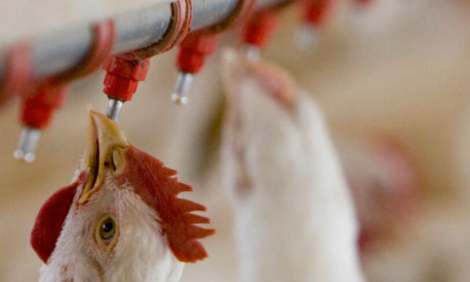



USDA offers $1.5B for school meals during supply chain crunch
USDA providing $1.5 billion to help school meal programs weather the supply chain crunch

Procuring large amounts of food has become difficult because of delays in shipments, a lack of certain products, high food costs and labor shortages during the COVID-19 pandemic, reports Reuters.
USDA is tapping the Commodity Credit Corporation (CCC) for funding, providing $1 billion for schools to purchase food for their meal programs and another $500 million for the purchase of local foods to be distributed to schools, Vilsack said.
"This will result in a 5% increase in what school districts normally have available," Vilsack said at Gourmet Gorilla, a food service company that prepares 40,000 meals to schools in the Chicago area.
The 1930s-era CCC has generally been tapped to provide subsidies for farmers, and gives USDA broad authority to make direct payments to growers when crop prices are low.
The number of Americans without enough food to eat remains higher than before the pandemic, and the Biden administration has sought to ramp up funding for food stamps and school meal programs.
The funds should be available starting in January.
Supply Chain Assistance Funds
USDA’s Food and Nutrition Service (FNS) is providing $1 billion to states for cash payments – known as Supply Chain Assistance funds – that school districts can use to purchase foods for their school meal programs. These funds deliver direct relief from ongoing supply chain issues and improve the quality and consistency of school meals for children in communities experiencing disruptions, making it easier for schools to operate successful meal programs.
In total, the Supply Chain Assistance Funds are expected to provide a boost in resources for up to 100,000 schools across all 50 states, D.C., Puerto Rico, Guam, and the U.S. Virgin Islands, including public, tribal, charter schools, and nonprofit private schools as well as residential child care institutions.
Supply Chain Assistance funding can be used by school districts to purchase unprocessed and minimally processed domestic food such as fresh fruit, milk, cheese, frozen vegetables and ground meat. Each state will allocate the funds to schools based on student enrollment, with a minimum amount per district to ensure that small schools aren’t left behind.
To strengthen local food supply chains, states have the option of using up to 10% of the Supply Chain Assistance funds to make bulk purchases of local food and then distributing these foods to schools for use in their meal programs. States also have the option of targeting the funds to areas of highest need by limiting distribution to school districts where a quarter or more of students are from low-income households.









